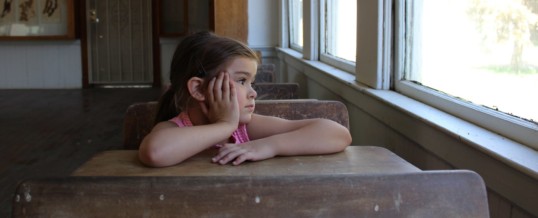
The situation: Five-year-old Abby pushed her way into the preschool line. She had been waiting all day to show her teacher how well she could ride a bike with training wheels.
“Hey, you’re pushing in front of me and that’s not fair,” cried Jack. “I want to get outside too!”
Abby started to cry: “Now I’ll never be able to show Mr. Martin how I ride a bike, because they’ll all be taken!”
Mr. Martin approached the children and asked what was going on.
“Abby pushed me so she could get a bike, but I was here first,” Jack complained.
“I just wanted to show you that yesterday I learned to ride a bike with training wheels,” Abby confessed.
“Abby, what a wonderful new skill you learned. I would like to see it.” Abby sighed with relief that her teacher knew what she wanted. “But Abby”, he added, “you know the rule about waiting your turn and not pushing in line.”
Mr. Martin turned to the class and thanked them for waiting while he and Abby figured out what to do.
“Abby, how do you think you could solve this problem?” he asked.
“Don’t let her go outside,” said Jack; Megan chimed in, “Make her apologize!”
“Well, those are not kind ways to help Abby,” Mr. Martin responded, “and I think she can decide what to do, because she knows about good choices. Abby can listen to her inside helper.”
Abby looked at Mr. Martin and said, “I know what to do; I need to go to the end of the line. But I want a bike. Can you save time for a turn on one for me?”
“Now you are listening to yourself and you are making some good choices,” Mr. Martin responded. “Of course we can save some time for you on a bike. OK, let’s straighten out this line and get outside!”
When they were outside Abby approached Jack and told him she would work hard to make a better choice next time and not cut in line again. “Thanks,” replied Jack as he ran off to play.
The Lesson: Abby knew how to use her conscience and needed the opportunity to use it to help her with problem-solving. She just needed a little time and the kindness of her teacher to look inside herself and find a kind solution.
Reprimanding her or depriving her of privileges would not help her listen to the kindness of her conscience. When children receive primarily harsh or punitive consequences, they develop a harsh conscience, which they turn away from in times of trouble.
Given the opportunity and adult support, Abby came up with good ideas. If her teacher had given in to the temptation to just take over, she might have been deprived of this opportunity for further conscience development, increased self-esteem, greater confidence, and a feeling of mastery. Lucky Abby; she had a teacher who understands that children need to develop this important skill – and who made it his job to give her the chance, even while juggling the busy transition to outside time.
Learning points
- Children ages 3-5 (and older, too) want to do the right thing – even though sometimes their behavior seems otherwise.
- Adults need to help young children make good choices and use their conscience – or inside helper. Children are not born with this ability.
- Adults model good decision-making by using love, kindness and understanding.
- Teaching children to make good decisions by yelling, punishing or humiliating is ineffective. These approaches make them feel angry, unsure of themselves, and develop a lack of confidence and low self-esteem.
- We all want to be treated well and to feel good about ourselves. We want the same for children.
- Modeling kindness, support for learning, appropriate behavior, clear expectations and loving
- praise for good decisions will help children achieve a feeling of well-being.
- Modeling good decisions will also help achieve a feeling of well-being.
- When children have a feeling of confidence and well-being, they can use their conscience to make good choices.
Image courtesy of Freeimages.com/Ned Horton
JAN
2019


About the Author:
Judith L. Pitlick, MA, LPCC is a child, adolescent, and adult psychotherapist and psychoanalyst in private practice in Shaker Heights, Ohio. She works with individuals, couples, parents and families. As a licensed teacher in regular and special education, she previously taught at a therapeutic school as well as at area colleges and universities. She is on the faculty at The Hanna Perkins Center for Child Development, where her work includes consultation with directors, teachers and parents at area schools and child care centers. Pitlick is on the Faculty of the Cleveland Psychoanalytical Center and is a clinical Instructor in the Case Western Reserve Medical School Department of Psychiatry.